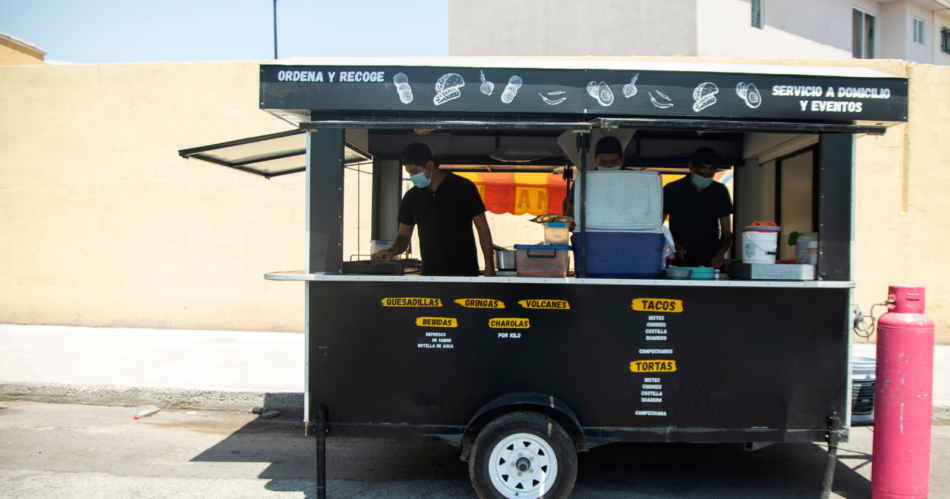When I read Jordan’s recent article about how the word “vegan” can tank food choices by up to 66%, I immediately thought of Giants cap and his black bean tostadas.
Last spring, I was helping my friend Marco at his Mission district taco truck—his sous chef had moved to Portland, and I’ve never been able to resist the controlled chaos of a kitchen, even one on wheels. What started as a favor turned into an accidental experiment in human psychology that I’m still thinking about.
The pattern revealed itself that first week. A regular customer—Giants cap, always orders carnitas—stared at our menu board like it had betrayed him. We’d run out of pork during the lunch rush. “Just try the black bean,” I suggested, pointing to the ones I’d been assembling all morning. “Same toppings, same salsa verde you always get.” He ordered three, then came back the next day asking for them specifically, telling his coworker they were better than anything he’d had at the fancy place downtown.
But when I added a “Vegan Black Bean Tostada” sign the following day (a customer with allergies had asked about dietary options), everything changed. Giants cap took one look and ordered al pastor without checking the price.
“Thought you loved the black beans?” I asked.
He shifted uncomfortably. “Yeah, but I need real food today. You know, something substantial.”
At the time, I found it puzzling. Now, after reading about the research, I realize I’d been watching this phenomenon play out order by order, day after day, for an entire month.
The accidental experiment begins
Back then, I didn’t know about university studies or the psychology of food labeling. I just started noticing patterns. Some days I’d label our vegan items—the black bean tostadas, the mushroom quesadillas with cashew crema, the cauliflower tacos that had become our sleeper hit. Other days, I’d list only ingredients, the way my grandmother would have written them.
By the second week, the pattern was undeniable. On unlabeled days, we’d move fifty to sixty black bean tostadas during lunch rush. With the vegan label? Twenty-five to thirty, max. The cauliflower tacos dropped even more dramatically—from selling out to barely moving a dozen.
Looking back now, I realize I wasn’t just counting sales. I was watching people wrestle with their own psychology in real time. Construction workers who’d happily devour elote—street corn that traditionally never contains dairy—would pass on clearly marked “vegan” options like they were radioactive. Tech workers would order exclusively vegan-labeled items, as if their lunch choices were tiny protests. Everyone was performing something.
Carlos learns something about himself
Three weeks into helping at the truck, I met Carlos. Construction worker who came by every day at 12:15 sharp, al pastor tacos with extra cilantro. He’d joke with his crew about vegetarians while waiting, a routine as practiced as any comedy set.
Then came the Thursday we ran out of pork right before he arrived. Marco’s supplier had shorted our morning delivery.
I watched Carlos scan the menu board with something approaching panic. His crew was waiting back at the site. Leaving empty-handed meant admitting defeat, maybe grabbing fast food like some kind of rookie.
“The mushroom quesadilla is basically the same prep as al pastor,” I told him, stretching the truth considerably. “Just try it. If you hate it, tomorrow’s on me.”
He ordered one with the expression of someone agreeing to a root canal, then stayed at our counter to eat instead of walking back to his crew. I pretended to busy myself with prep, but I was watching. The moment hit visibly—his eyebrows rose despite himself, that involuntary reaction when something you’re prepared to hate turns out to be exactly what you wanted.
He ordered two more. Paid in cash. Looked me dead in the eye.
“This never happened,” he said. He wasn’t entirely joking.
The next day: back to al pastor. But the following day, when I’d forgotten to put up the vegan labels in the morning rush, he ordered mushrooms again. This time, he took them back to his crew.
“New special,” I heard him announce, casual as anything.
The Thursday that changed everything
After about a month of observing these patterns, I witnessed what I now think of as Black Thursday—the day that shattered everyone’s carefully maintained food personas.
A tech conference had flooded the neighborhood. Construction crews were breaking for lunch. And Marco had underestimated our meat order after a slow week. By 11:45, all we had left were the items marked vegan.
I braced for disaster. Instead, I witnessed a collective breakthrough.
The cauliflower tacos that had been languishing all week? Gone in forty-five minutes. The black bean tostadas? I couldn’t assemble them fast enough. Even the cashew crema—which usually prompted suspicious questions—was accepted without comment.
“Wait, these are actually vegan?” A woman in conference swag was already halfway through her second tostada, looking at it with new suspicion. “But they’re actually… filling? And good?”
A construction worker who’d been vocal about his meat requirements all month ordered three cauliflower tacos and went back for more. “Don’t know what’s in that sauce,” he told his buddy, “but it’s incredible.”
By 2 PM, we’d sold out completely. Marco and I sat in the empty truck, marveling at what had just happened. Scarcity had overridden identity. Hunger had trumped ideology.
What divides us (and what doesn’t)
The pattern that emerged over my time at the truck wasn’t about age or politics or even actual dietary preferences. It was about who saw food as identity and who just saw lunch.
Older Mexican women ordered whatever looked good, labels be damned. “We’ve been eating vegetables forever, mija,” one regular told me matter-of-factly while loading up on cauliflower tacos. “We just called it lunch. Or poverty.” She paused, then smiled. “But mostly lunch.”
She had a point that felt bigger than our food truck. Traditional Mexican cuisine relies heavily on plants—beans, corn, squash, nopales, chayote. Nobody needed special terminology because nobody was making a statement. They were just eating.
But younger customers treated that five-letter word like a test they couldn’t afford to fail. They’d grown up in a world where lunch could mark you as conscious or ignorant, virtuous or backwards. Every bite became a ballot.
There was the woman in designer workout wear who whispered her vegan order like a confession. The tech bros who ordered meat dishes they didn’t even seem to enjoy, just to avoid association with their vegan coworkers. The young professionals who photographed their labeled vegan meals for Instagram before taking a single bite.
Even vegans seem to understand this psychological barrier. Scroll through vegan YouTube and you’ll find countless “taste test” videos where meat-eaters are shocked—shocked!—to discover they’ve been enjoying plant-based food. Vegan recipe blogs lead with promises like “You’d never know it was vegan!” as if the highest achievement is hiding what something actually is. It’s a strange dance where even advocates acknowledge that their label is a liability. They know what I learned at that truck window: sometimes the word itself is the biggest barrier to acceptance.
The last day’s revelation
On my final day helping Marco, I made an executive decision: no labels on anything. Just food and ingredients, described simply. Black bean tostada with pickled onions and avocado. Mushroom quesadilla with cashew crema. Cauliflower tacos with lime.
The results were striking. Black beans sold out by 1 PM—faster than any day that month. Carlos ordered mushroom quesadillas in front of his whole crew, even recommended them to the new guy. The conference crowd ordered based on what sounded good rather than what aligned with their personal brand.
That evening, as we cleaned the truck and counted the till, Marco asked the obvious question: “Should we drop the vegan labels permanently?”
I thought about the customers with allergies who needed clear information. The ethical vegans who relied on proper labeling. The woman who’d whispered her order. Carlos and his secret mushroom love affair.
“Some people need those labels to find food they can eat,” I said. “Others need them gone to try the same food.”
We sat with that contradiction, the way you do when the answer isn’t clean.
What my time in the truck taught me
Looking back on those weeks in Marco’s truck, I realize I learned something that no study could fully capture: we’re all performing, all the time, even when we think we’re just grabbing lunch. Every choice broadcasts who we think we are—or who we’re afraid of becoming.
But sometimes the performance cracks. When we’re hungry enough, surprised enough, or just forget we’re being watched, we discover we’re not quite who we thought.
That woman who walked away from the black bean tostada on day one? She never came back. I think about her sometimes, about what she missed because of a word. But I also think about Carlos, who by week four was openly evangelizing about mushroom quesadillas to anyone who’d listen.
Maybe that’s what labels do—they protect us from having to discover what we actually want. They let us navigate the world without questioning whether our choices match our desires. Drop them, and suddenly you’re left with just appetite and curiosity.
The black beans were always real food. The cauliflower tacos were always satisfying. The mushroom quesadillas were always worth trying. Some days, we just made it easier for people to notice.
What’s Your Plant-Powered Archetype?
Ever wonder what your everyday habits say about your deeper purpose—and how they ripple out to impact the planet?
This 90-second quiz reveals the plant-powered role you’re here to play, and the tiny shift that makes it even more powerful.
12 fun questions. Instant results. Surprisingly accurate.









